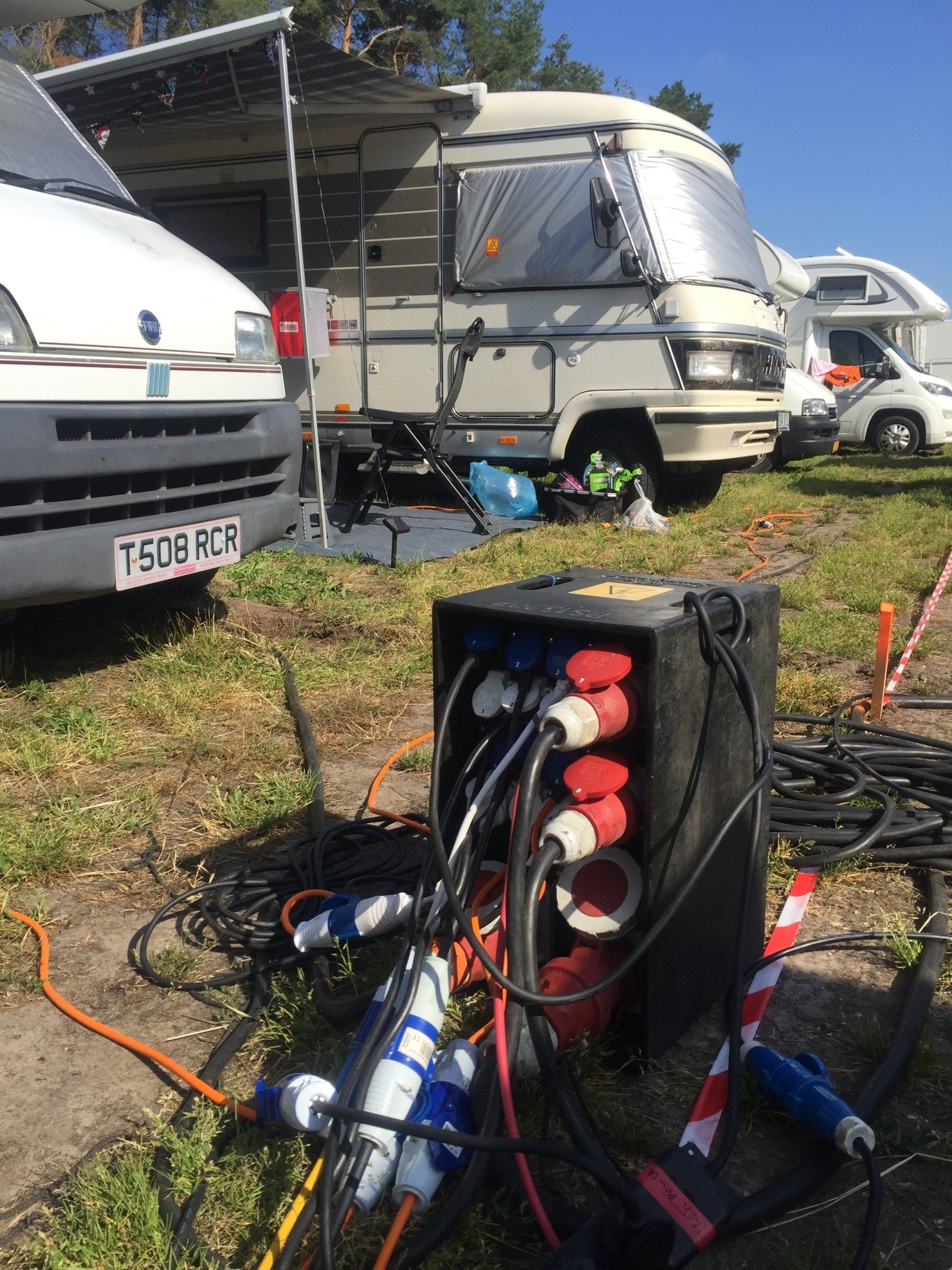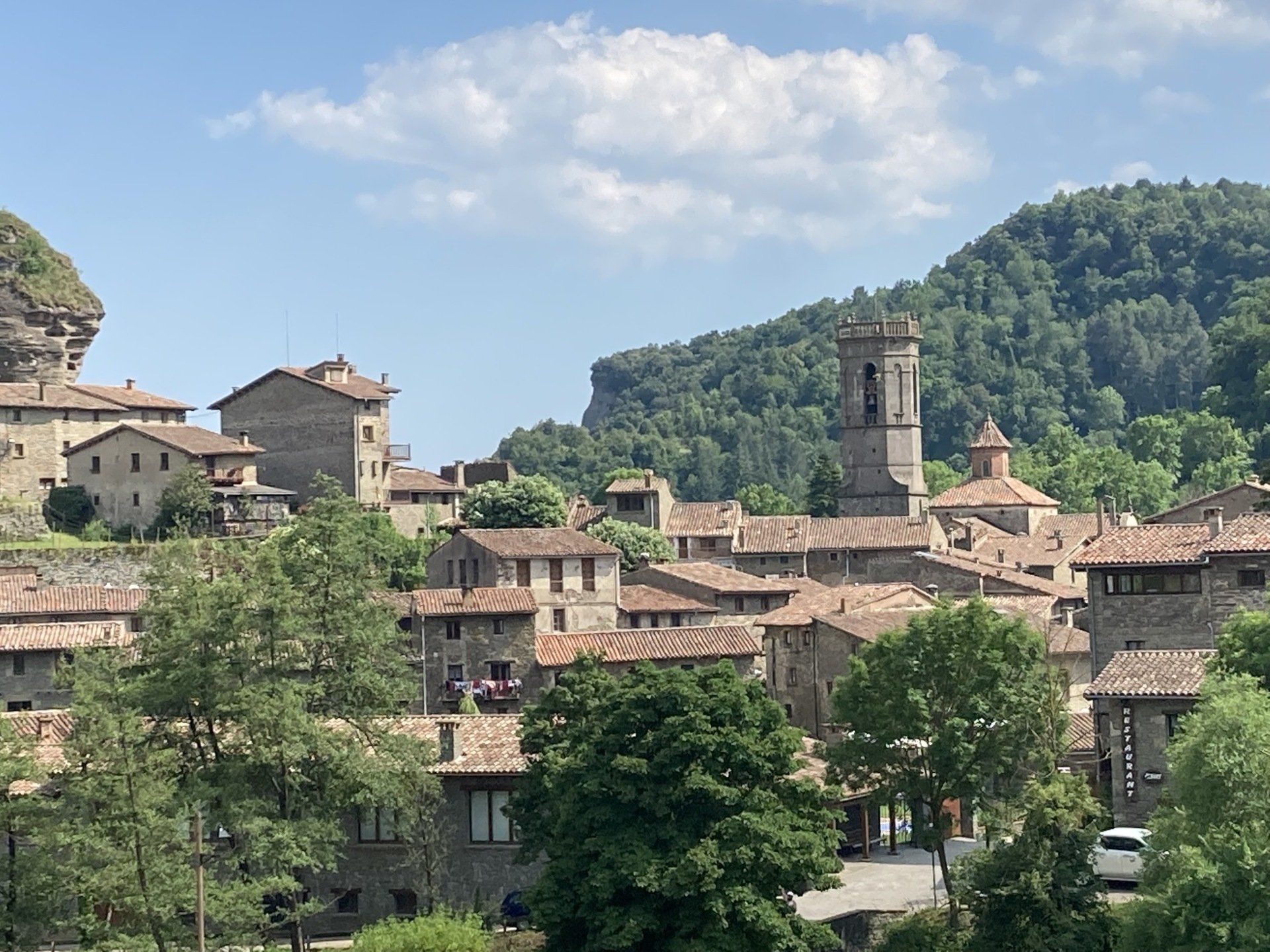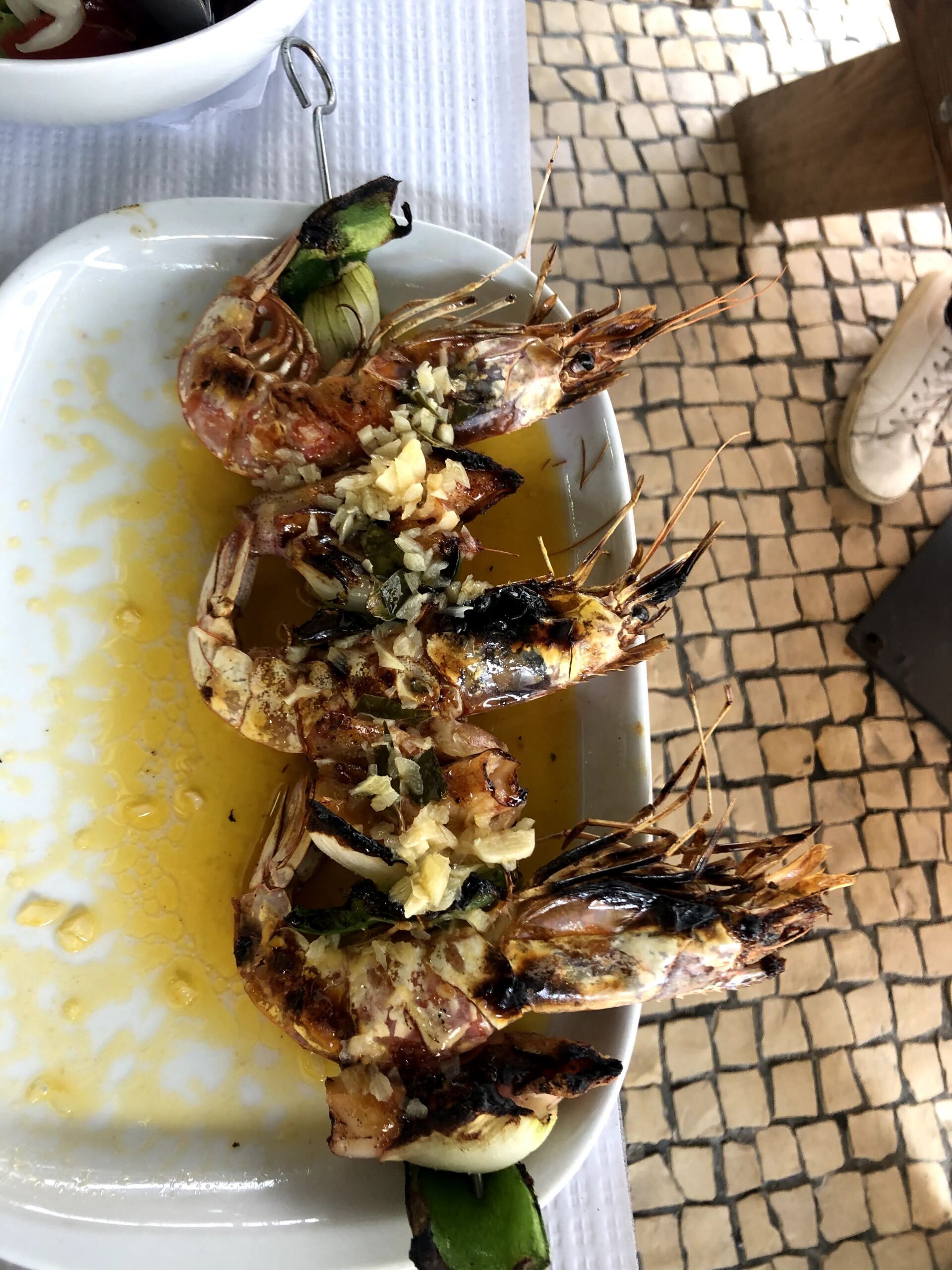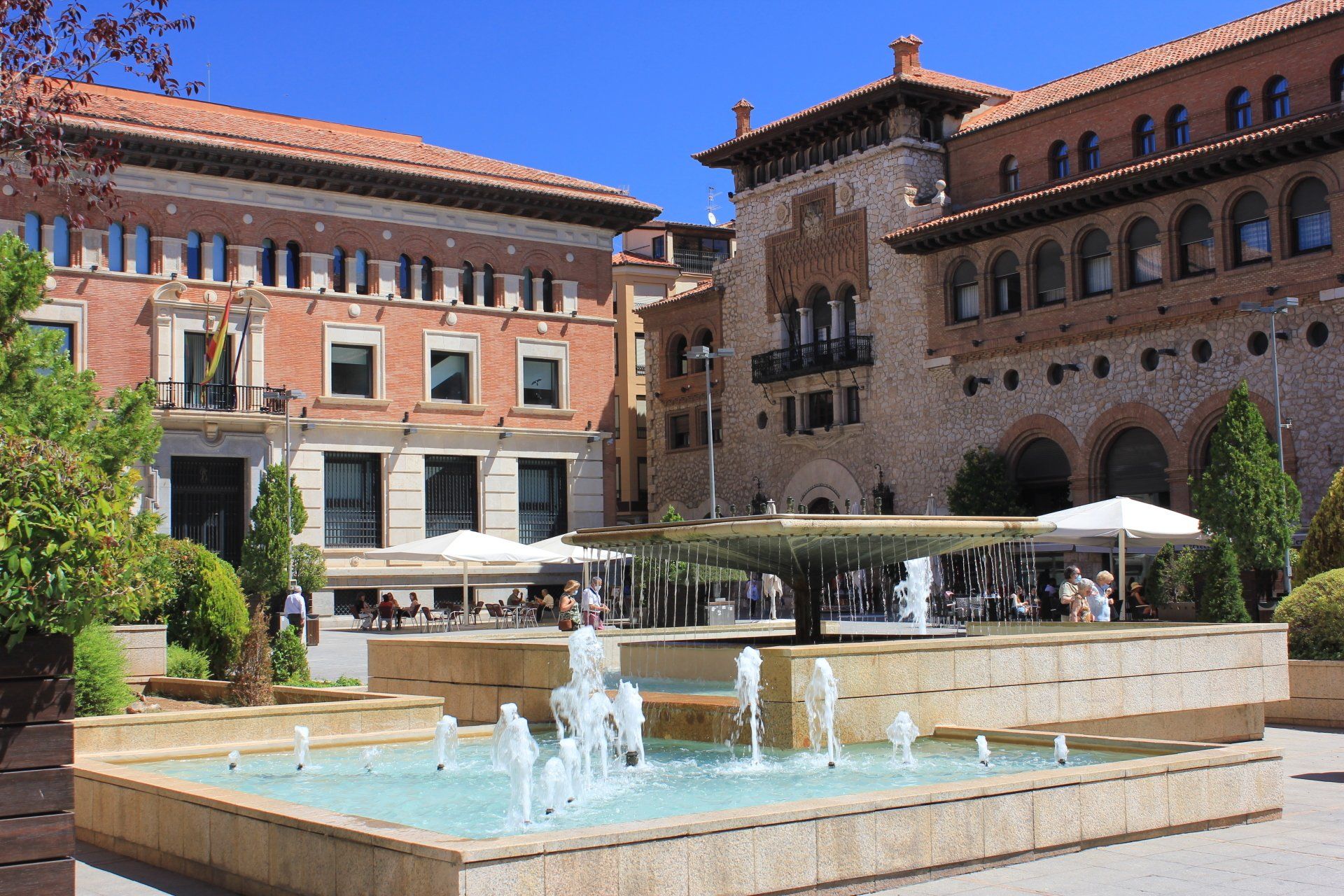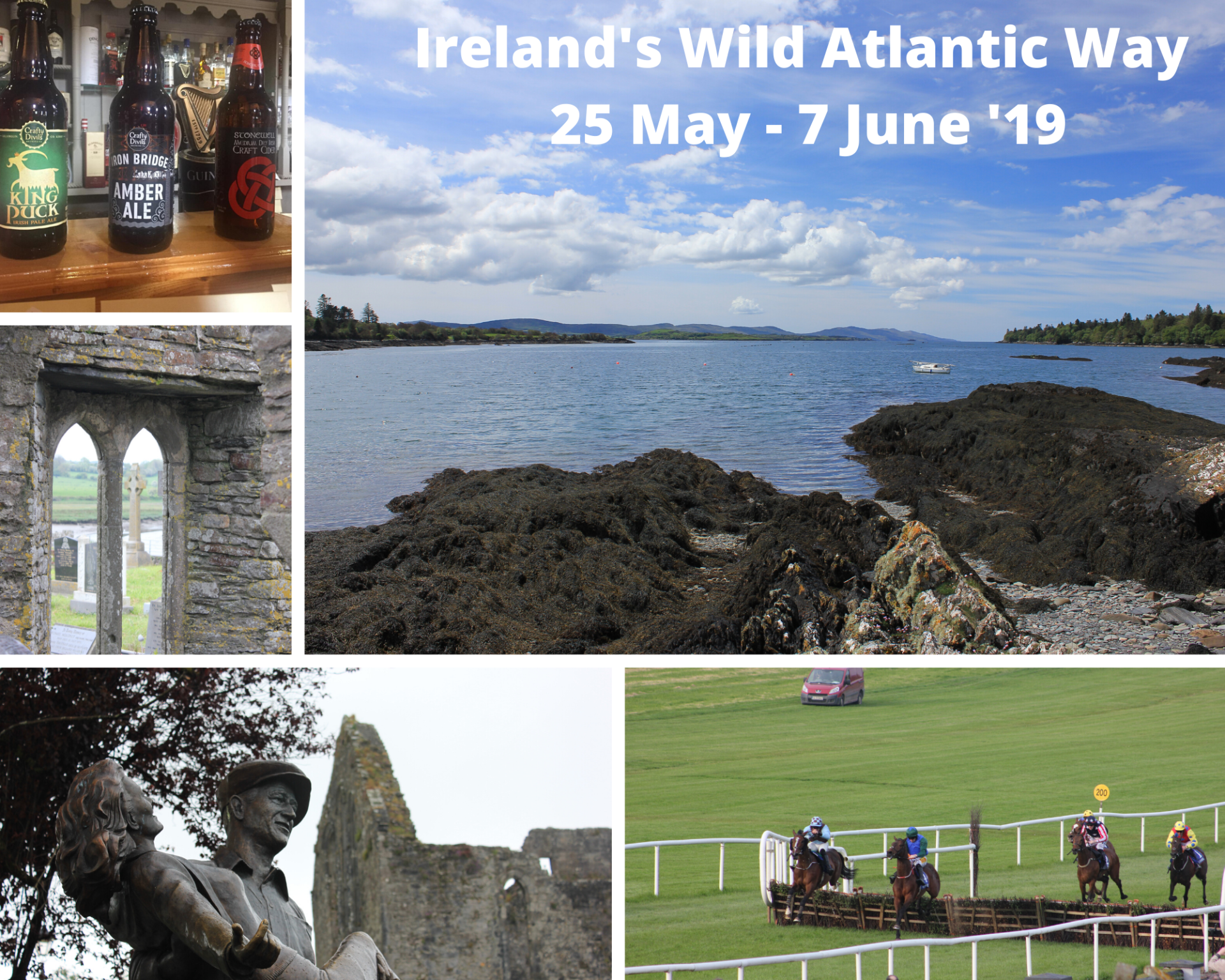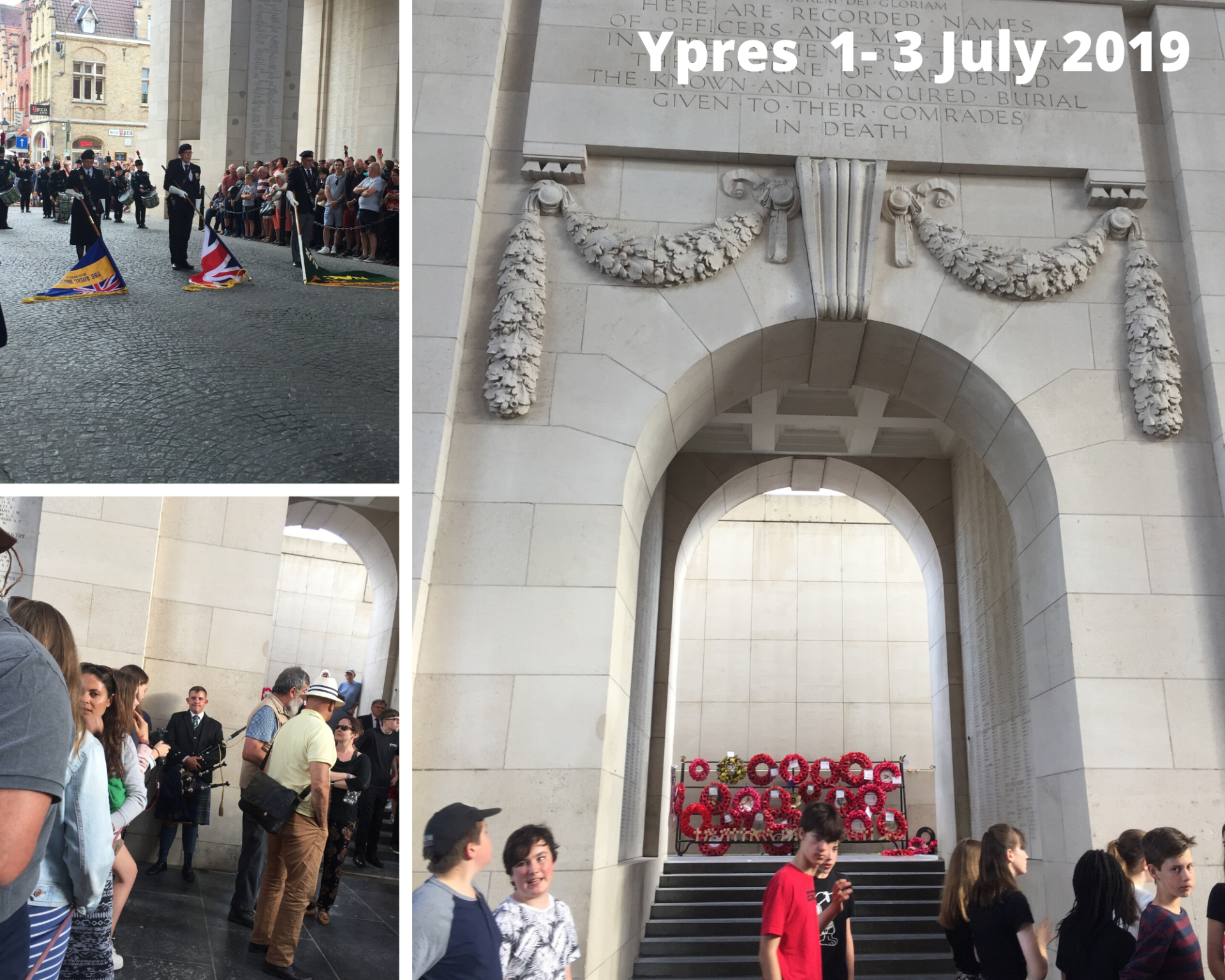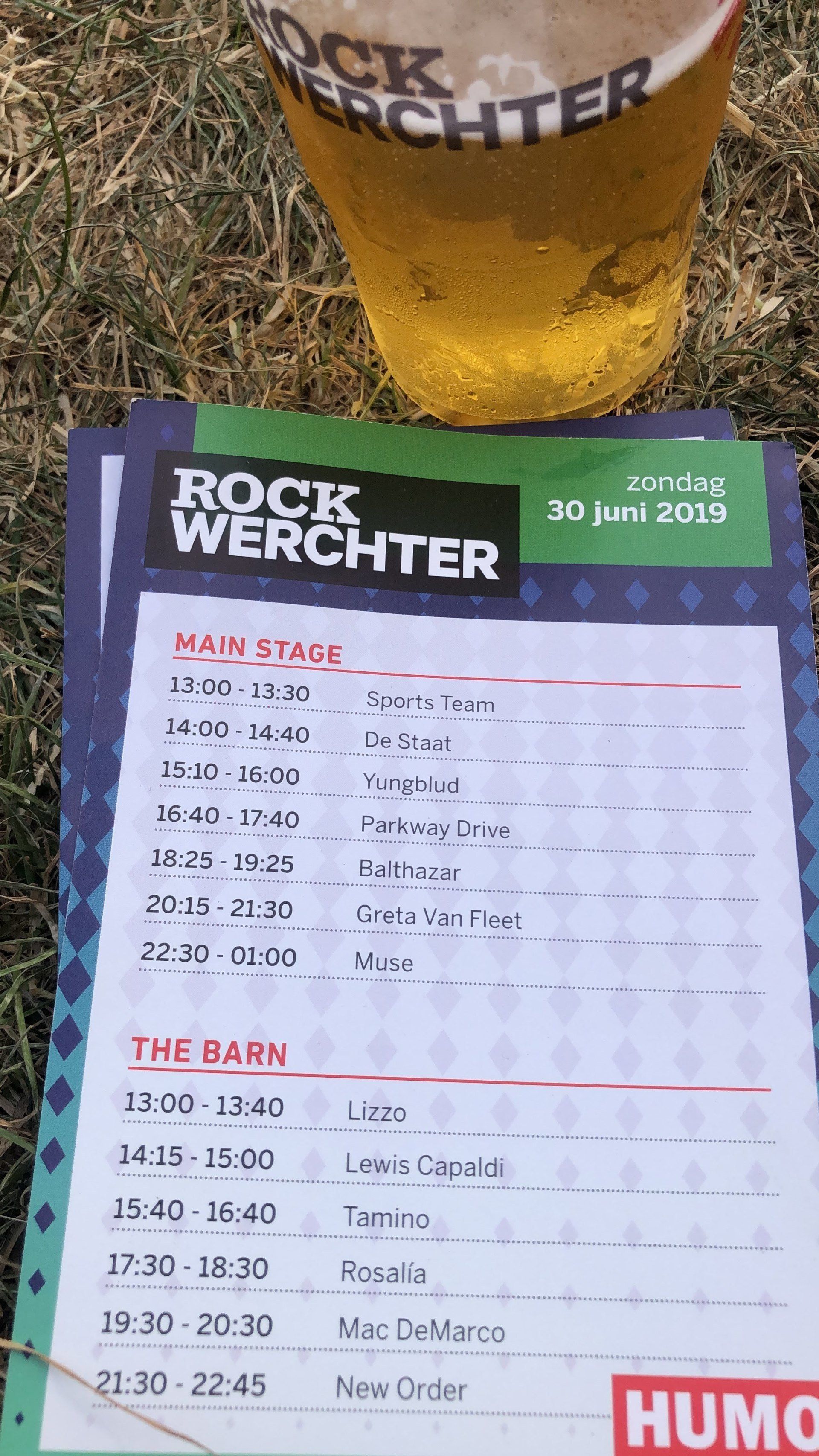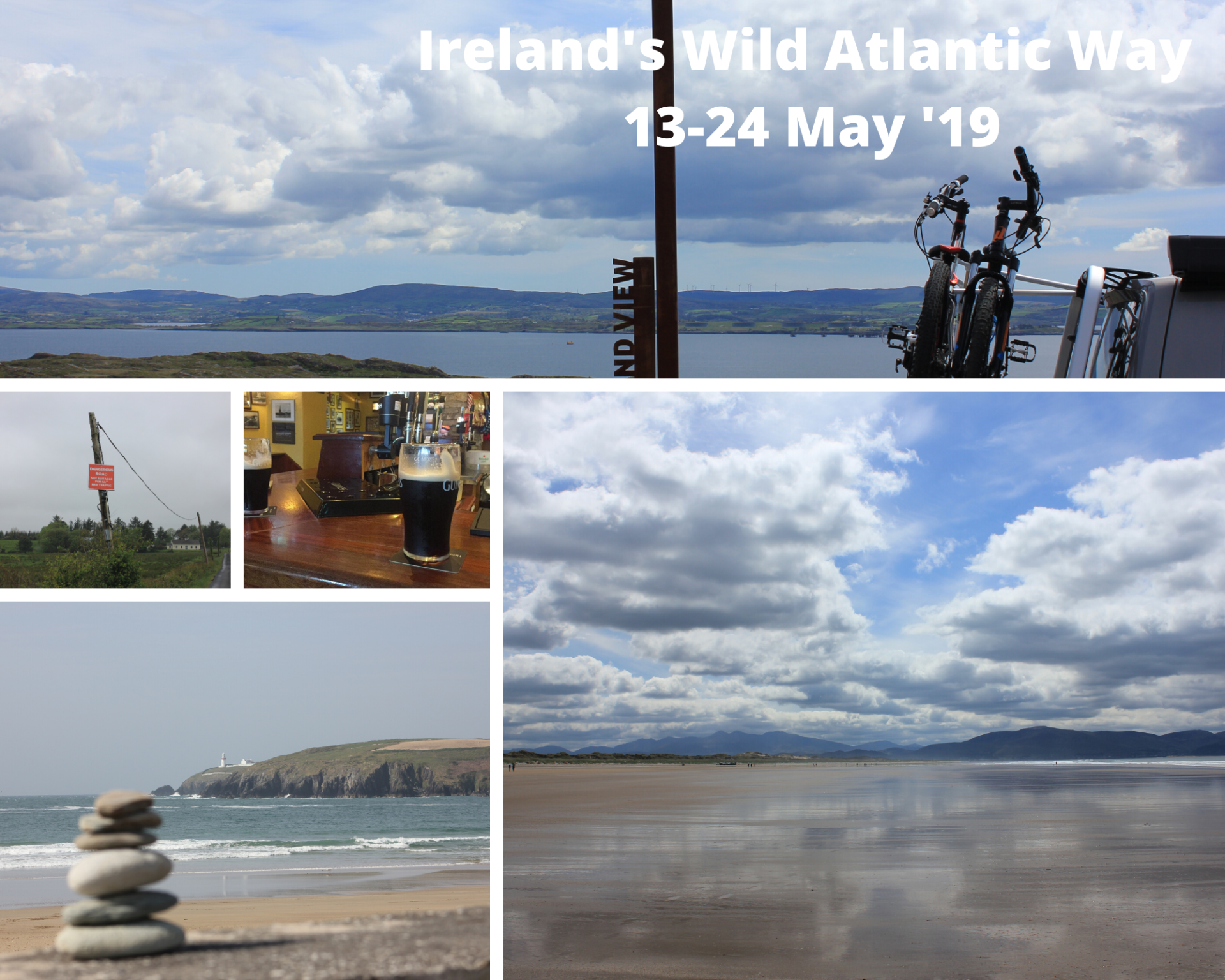Just outside Leuven, the Belgian village of Werchter has hosted a music festival every year since 1976.
Rock Werchter is one of Europe’s biggest events drawing crowds of around 150,000 people in recent years. We visited in 2019, taking advantage of one of the official campsites which opened on the Wednesday evening, prior to the festival starting the following day. Access was straightforward with plentiful temporary signage directing arrivals into the village from different directions depending upon which campsite you are aiming for.
The sites, as well as all festival related activities such as visitor assistance, litter picking etc, are all provided by local volunteers, who in our experience were incredibly friendly and unfazed by their small village being swamped by thousands of festivalgoers for the weekend.
Our site was “Camping Regular C3” to the east of the village, which comprised of segregated campervan and tent areas, with their own portaloos areas and standpipes for fresh water (and occasional showering!) The site also had a beer tent, fast food van and shower block, all of which required tokens, known locally as “zetons”, that could be purchased from an on-site kiosk.
I realised that the sink and mirror locations at the end of each shower block trailer had power when a young guy asked me if he could swap places with me to plug his hair dryer in….another similarly aged camper and I shared a facial expression that could be interpreted as either “for fecks sake” or “we’re doomed.”
Each camping plot also had electricity; however, the supply was via a standard European two pin plug as opposed to the normal hook ups you’d find on a campsite.
The pre-event material included a map which showed a bus stop close to the campsite entrance, however suspiciously never said where any buses may be going to or when…..we never saw any over the entire weekend, however the site is an easy 15 minute walk from Festival Park where the event is held.
Whilst there are bars and burger vans immediately outside the entrance to the festival site, there isn’t much to Werchter itself, so make sure and arrive onsite well supplied. There are supermarkets and a few bars in the nearby Tremello, but it’s about a 30-minute walk from the site, which will limit how much beer you can carry. Of course, bread is lighter, but where’s the fun in that?
Access to the festival was straightforward, as was collecting the tokens that we’d pre-ordered, as again all transactions onsite used tokens instead of cash. These advance purchase tokens were purchased at a discounted rate, and on reflection we should have bought more.
The site comprises of four stages, two indoor and two outdoor surrounded by numerous food and drink, toilet, phone charging and water locations. These were vital in the last few June days in 2019, with clear skies and high temperatures. It’s not permitted to bring drinks onto the site, but reusable water bottles are allowed, and were essential that year. If we did have a criticism, it would be that there isn’t much shade on the site, although there are places where misted water was blown by fans into the crowd. Therefore, we’d suggest a hat for the afternoon, and a light fleece for the evening as you’ll experience significant temperature contrasts throughout the event.
The event reportedly attracted 180,000 people on the Saturday, however the layout meant the site didn’t at any stage feel crowded, apart from some last-minute surges if trying to get into the massive Barn or Klub C marquees immediately before a big act. Access was well managed with signage showing whether individual entrances were open or closed, and volunteers inside encouraging crowds to move towards the stage and free up room at the back.
Our gig benefited from the event being held on the same weekend as Glastonbury, meaning that acts such as Bastille, Kylie, Years & Years, The Cure and Two Door Cinema Club flew between both locations, however the overall line-up was excellent with acts such as P!nk, Muse, Elbow, New Order, Underworld, Greta Van Fleet, Elbow, Richard Ashcroft, The 1975, Weezer, Mumford & Sons, Florence & The Machine, and many, many more.
As always, these weekends aren’t simply about the music, but also the people that you meet, and Rock Werchter was no exception. Our fellow campers came from all over Europe, and everyone was incredibly friendly and great craic. As we all set up at the same time, as quickly as people realised they’d forgotten a vital piece of kit, someone else would appear with a spare. A special shout out to our temporary neighbours Matt and Cath in their beloved Hymer, who were passing through Werchter as part of their European travel odyssey; folk who similarly thought the best thing to do after a gig was to sit up and prove that “sun risers” were a much more sociable drink than “sun downers”!
We vacated the site late on Monday morning with the intention of stopping somewhere nearby for lunch – big mistake! Despite the fact that thousands of hungry campers were just up the road, the surrounding villages didn’t open up to capitalise on the opportunity, so save some bacon butties for the morning before you head off.
Overall, Rock Werchter was an absolutely fantastic weekend. Easy to get to, good location for camping with great facilities for a temporary site, and a brilliant line up of music spread over four days and nights. Whilst we’d obviously suggest keeping an eye on the line up to ensure it met your tastes, we would have no hesitation recommending the festival to fellow campervan fans. We’ll definitely return in the future.
